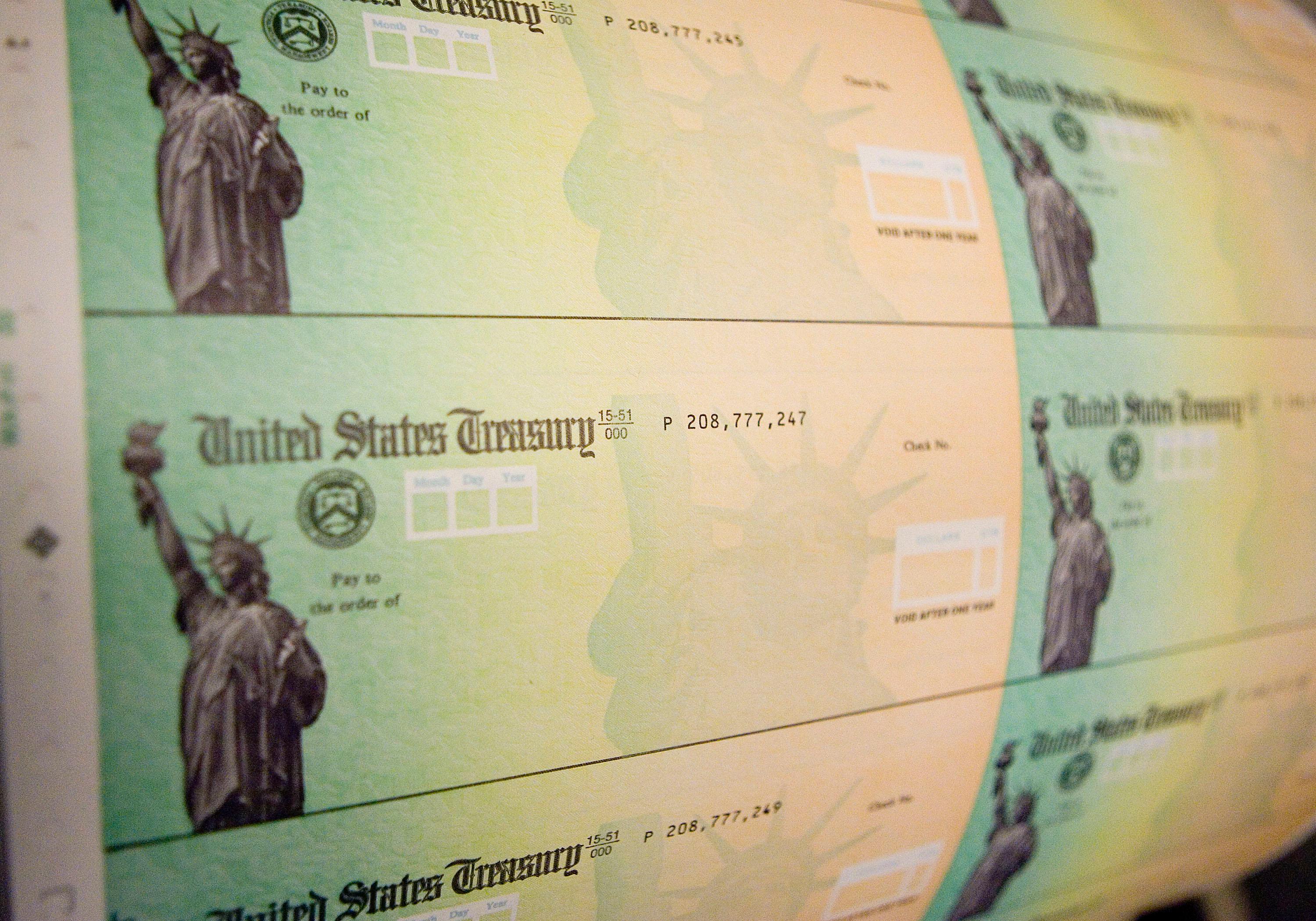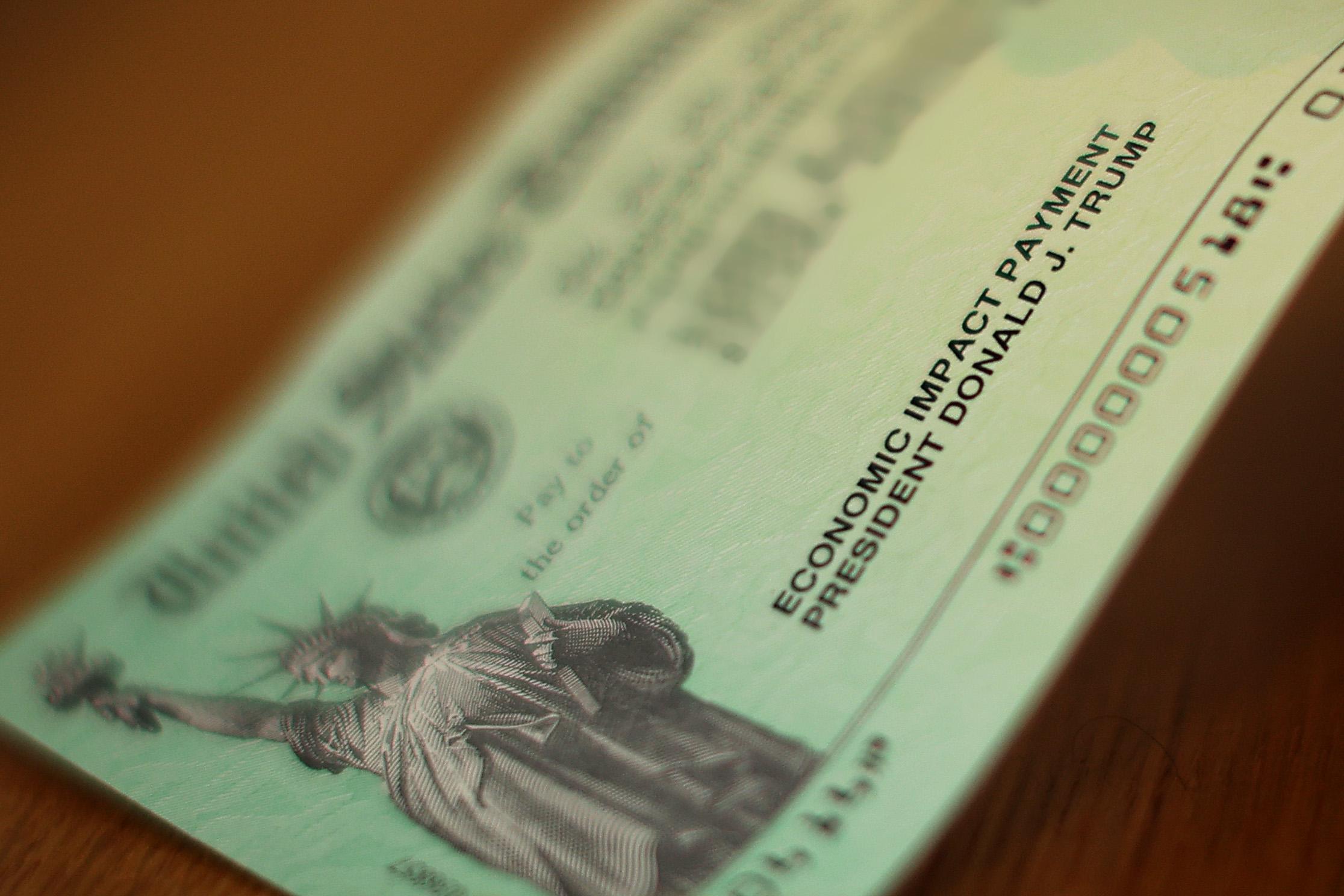
You might be able to get a $5,000 one-time payment, but it would come out of your social security
By Mark PygasMay 13 2020, Updated 9:09 a.m. ET
The administration of President Donald Trump is considering a policy proposal that would allow cash-strapped Americans to borrow $5,000 from their future social security checks, according to a report by The Washington Post.
Millions of Americans have lost their jobs as a result of coronavirus, and while stimulus payments of $1,200 have helped many, the money won't last long. And while future stimulus payments are expected, conservative researchers Andrew Biggs and Joshua Rauh recently suggested a tactic that could help people borrow more money while not expanding the national debt.

In an article for The Hill, the two proposed allowing Americans to borrow $5,000 against their future social security checks. This amount would be paid back by delaying when the recipient receives their first social security check. For most Americans, that would mean losing out on three checks come retirement.
"Next time Congress wishes to provide cash to households, it should offer voluntary loan checks of a chosen amount like $5,000," the authors explained. "Those who choose to receive a check would have that balance carried forward at a specified and favorable government interest rate until the time they choose to claim Social Security."
"The loan would then be repaid out of the very first Social Security checks that individuals would otherwise receive, after which their full Social Security check would be restored. Those who choose to receive no check would keep their Social Security retirement benefits completely unchanged. The delay that could be expected to repay a check of $5,000 would then be at most three months for the typical individual."
Biggs and Rauh believe that this would mitigate the issues surrounding a "blanket check" system like the stimulus checks. Only those who need the money would apply, reducing the total payment.
"Those in need can access the funds, but the resources do not need to be spent on households that do not need them. The fact that the repayment period is on average quite long makes it possible to provide liquidity to households in the form of a loan without requiring repayment in the very short term. In contrast to massive federal granting of deficit financed checks, taxpayers only take the funds if they need them, and the taxpayers who receive the funds are to a very great extent the ones who pay them back."

The researchers say that a low amount of interest would be applied to the borrowed amount, which could keep the plan budget neutral.
"Interest would start on the 20 year Treasury bond rate of around 1 percent and add an interest rate adjustment to account for individuals who will die before reaching the Social Security retirement age," they explain. "Those loan recipients who survive to retirement would thus pay the cost for the recipients who do not, which we estimate would add around half a point to the 20 year Treasury bond base rate. This approach would have the plan be budget neutral while providing those who need loans with favorable terms."
"The loan amount would in effect be drawn from the Social Security trust fund, but the interest rate is designed to fully reimburse the trust fund for the balance of the loan plus interest. While the balance would decline for each loan, the present value of the liabilities would also decrease, so the actuarial balance of the program would remain essentially unchanged."
"If avoiding optics of any acceleration of the trust fund depletion year were desired, the Treasury could credit the trust fund with Treasury bonds in the loan amounts, and the Social Security trust fund could “repay” the Treasury with interest upon the retirement of the individual."
However, Ryan Derousseau of Forbes notes that this program would be a boon for those who do not rely on social security when they retire and a burden for those who do. He also notes that savers could exploit the plan to applying for the loan and make money on it.
"Such a move, however, would be a boon for those that don’t have to rely on Social Security come retirement, and place a larger burden for those that do," Derousseau writes. "For savers, it could become a risk-free way to save even more money, at a potentially insignificant personal cost."
Derousseau goes on to explain how savers could potentially exploit the loan plan.
"Take someone 30 years from retirement that has a large amount of savings already, and low expenses. Since that person likely has a large stash of cash, he could take a $5,000 loan from Social Security, then simply invest it. Assuming a 7% return – the historical average of the S&P 500 index – over 30 years, and that $5,000 loan has now turned into nearly $40,000."
"Not only that, but such person would have a greater probability of delaying when they opt-into Social Security until age 70. Such a maneuver boosts the amount a person receives per check in Social Security. This high check level would allow them to pay back the loan in two months or less, depending on their average income throughout their working career. Seems like a low-risk (or no risk) maneuver for savers."
Derousseau also notes that social security is already weighted towards the wealthy since they tend to live longer on average. The amount of social security money given to high-income men grew by 26% for someone born in 1930 versus someone born in 1960. For the same time span, low-income men actually got 3% less money.
And since lower-income people collect their social security earlier, reducing the amount they are paid each check, it would also take them longer to pay the loan back than higher-income people.
"As a saver, it’s a tactic you might hope Congress adopts," Derousseau concludes. "But it’s also one that could cause more long-term pain for those that need the money the most in retirement."
The best way to prevent contracting or spreading coronavirus is with thorough hand washing and social distancing. If you feel you may be experiencing symptoms of coronavirus, which include persistent cough (usually dry), fever, shortness of breath, and fatigue, please call your doctor before going to get tested. For comprehensive resources and updates, visit the CDC website. If you are experiencing anxiety about the virus, seek out mental health support from your provider or visit NAMI.org.
